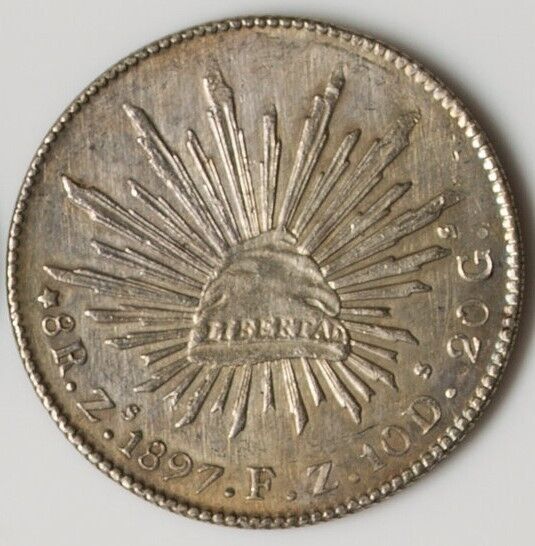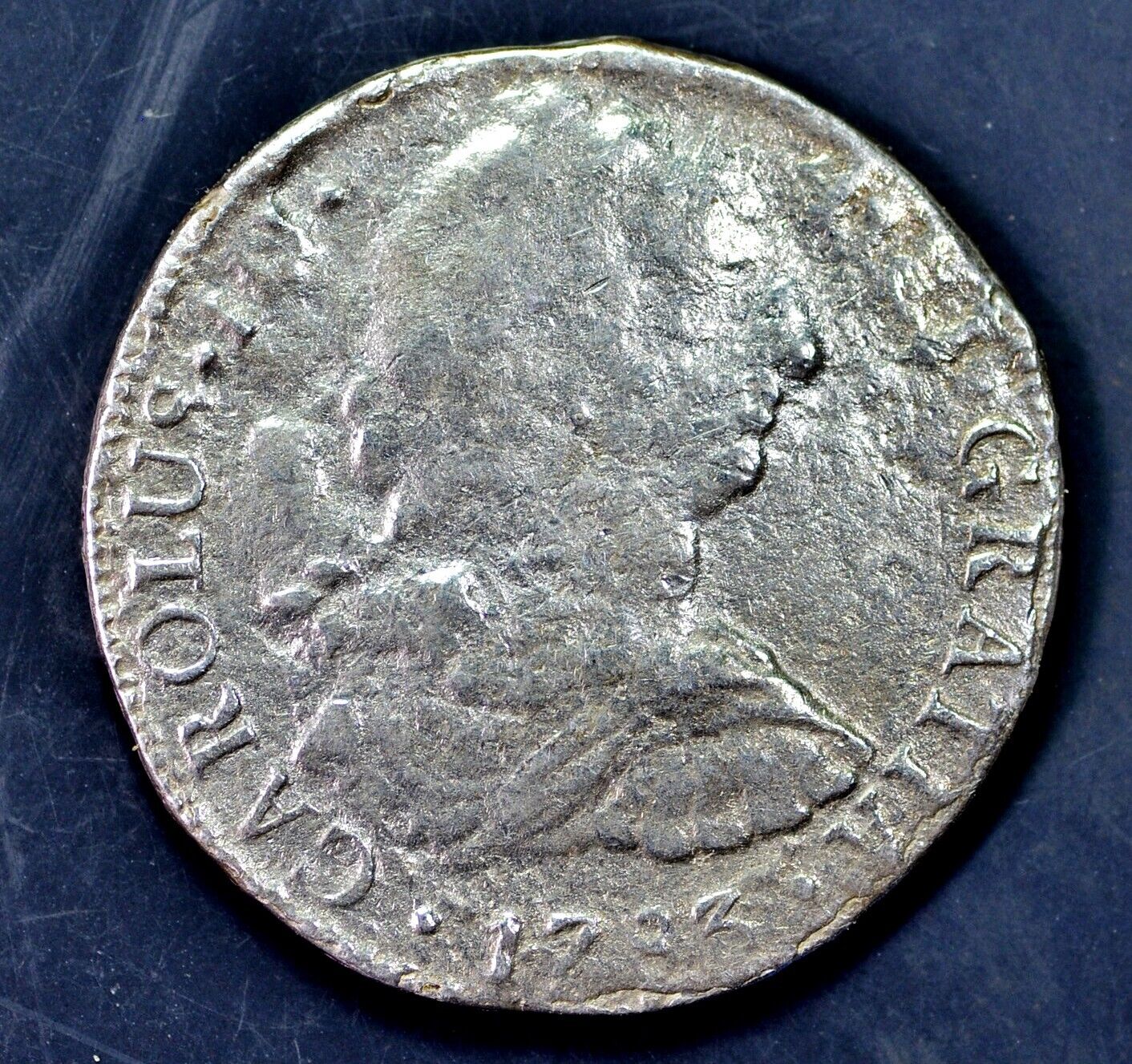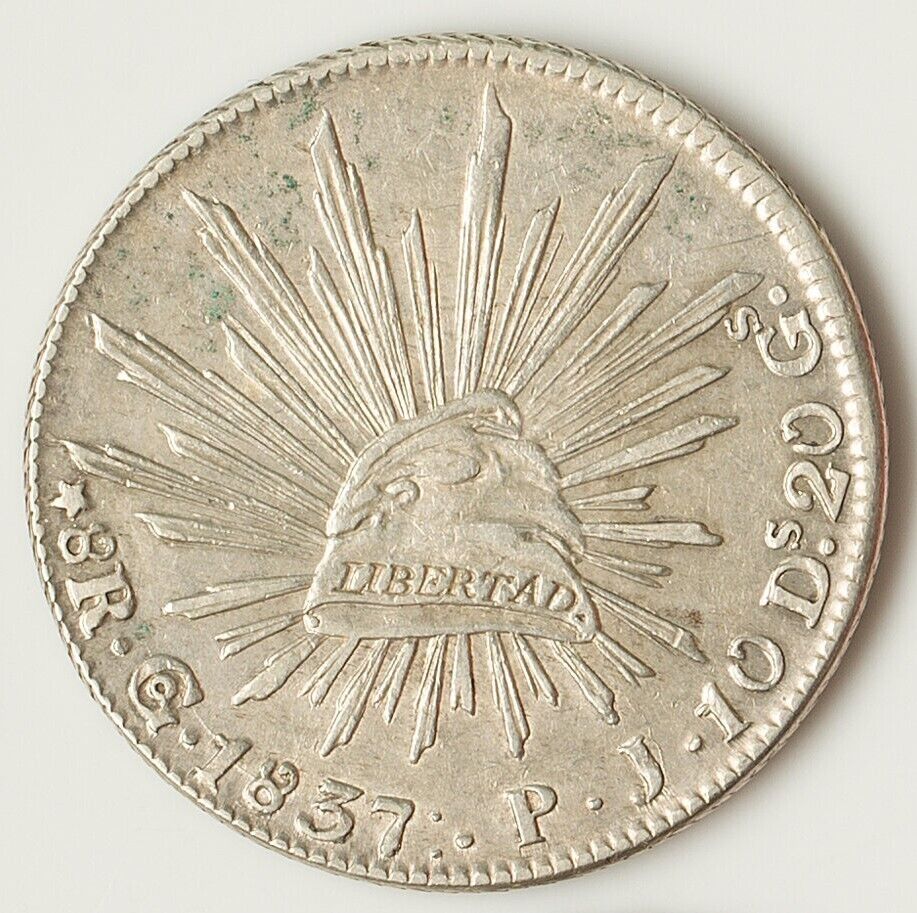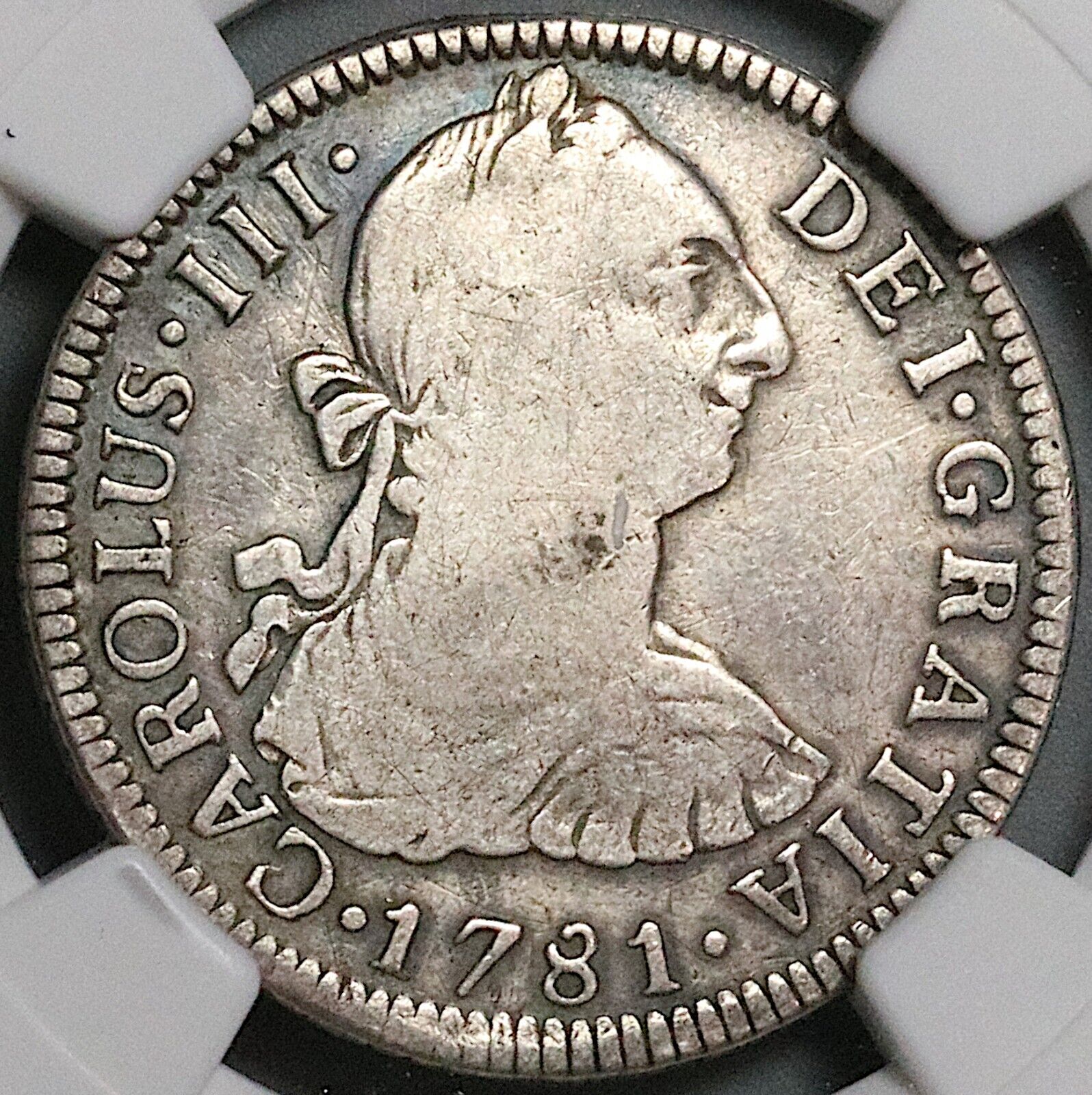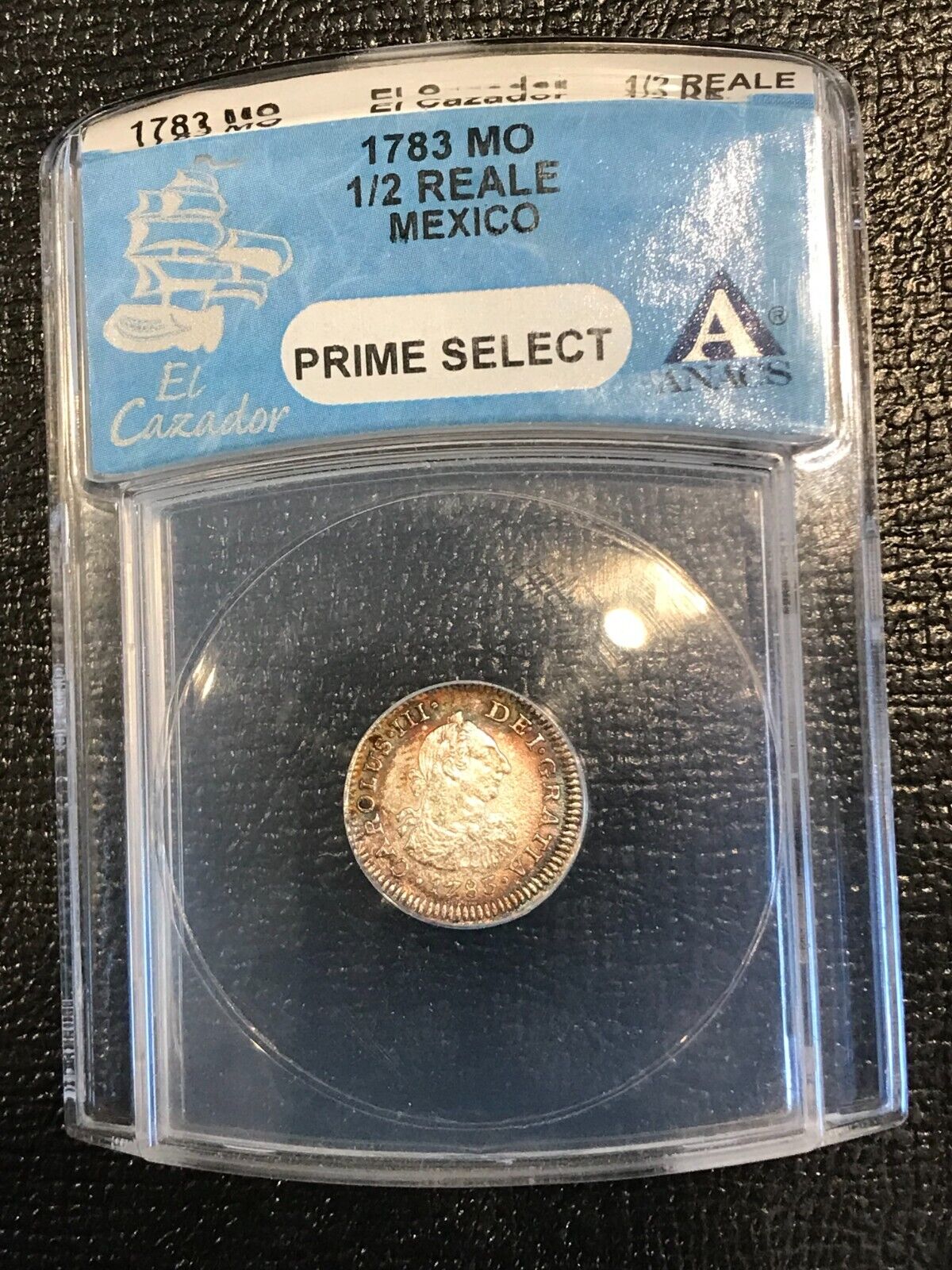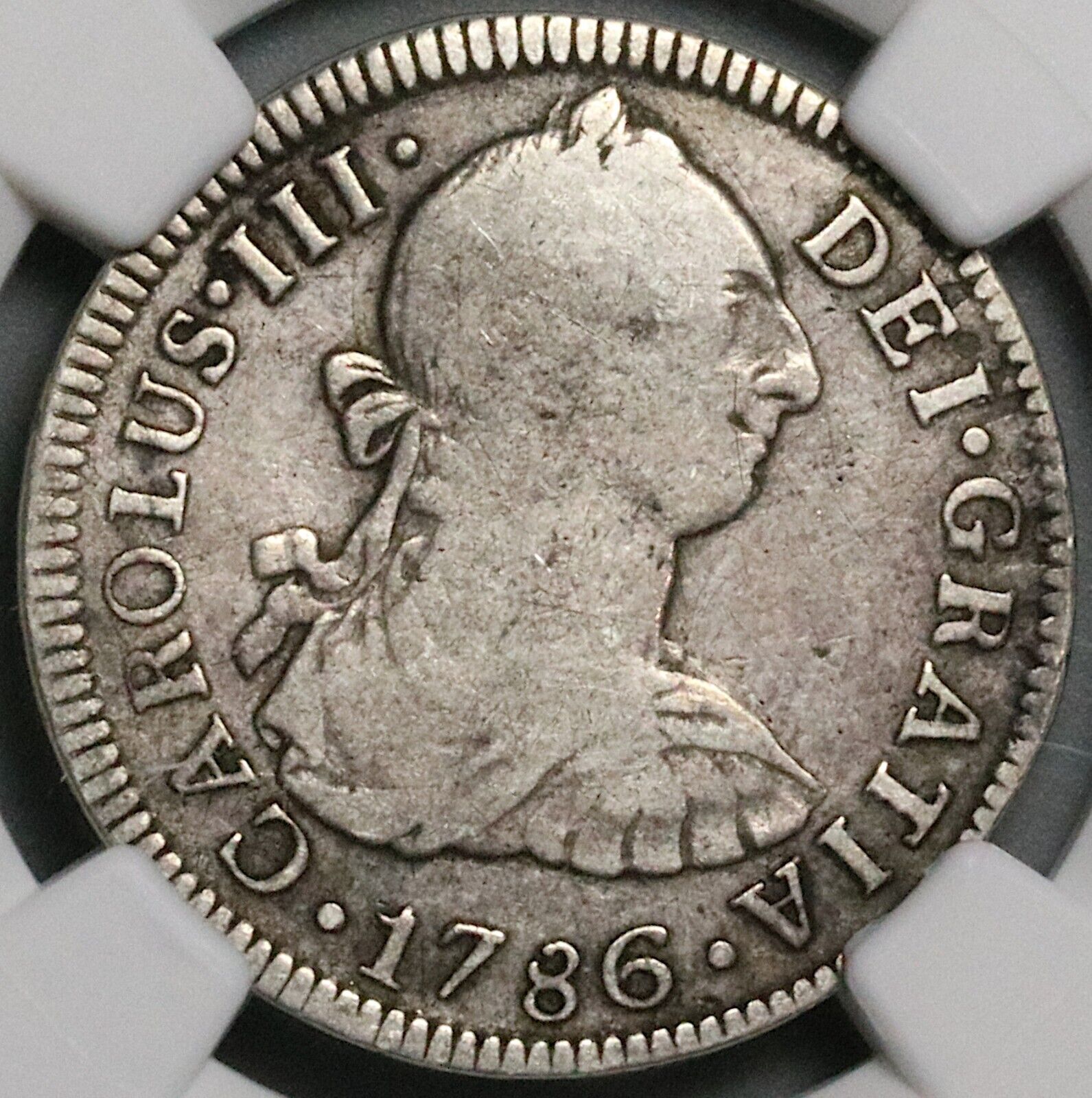-40%
Mexico 1897 Zs FZ 8 Reales CH AU - ORIGINAL SURFACES!
$ 118.8
- Description
- Size Guide
Description
During the Mexican First Republic, which lasted from 1824 to 1864, there were various coinage systems and denominations in circulation. Here are some key points about coinage during this period:Silver Reales
: The primary unit of currency during the Mexican First Republic was the silver real. The real was subdivided into smaller units, including half reales, quarter reales, and eighth reales (also known as "bits"). These coins were minted in various sizes and designs, often featuring the national emblem of Mexico on one side and the denomination on the other.
Gold Coins
: Mexico also minted gold coins during this period, primarily for larger transactions and international trade. These coins were denominated in pesos, escudos, and other units, with various denominations ranging from fractions of a peso to several pesos. The designs of these gold coins varied, often featuring national symbols, such as the Mexican coat of arms or the national eagle.
Copper Coins
: Copper coins were also in circulation, although to a lesser extent than silver and gold coins. These coins were typically of low denomination and were used for small transactions. They were often minted in denominations such as centavos or cuartillas and featured simple designs.
Minting
: Coinage during the Mexican First Republic was produced at various mints throughout the country, including the Mexico City Mint (Casa de Moneda de México) and regional mints in cities such as Guadalajara, Zacatecas, and Durango. These mints produced coins using precious metals mined from Mexican mines.
Political Instability
: The Mexican First Republic was marked by political instability, including civil wars, revolutions, and changes in government. This instability sometimes affected the minting and circulation of coinage, leading to variations in designs, mint marks, and the quality of coins produced.
Foreign Influence
: During certain periods of the Mexican First Republic, foreign powers, such as Spain, France, and the United States, exerted influence over Mexican territories. This influence sometimes extended to the coinage system, with foreign coins circulating alongside or in place of Mexican coins in some regions.
Overall, coinage during the Mexican First Republic was diverse and reflective of the country's rich history, culture, and economic activities during this period of transition and development.
The Mexican Second Republic, which lasted from 1867 to 1911, was a period marked by significant political and social change in Mexico. Here are some key points about coinage during this period:
Introduction of the Mexican Peso
: During the Mexican Second Republic, the Mexican peso became the official currency of the country. The peso was divided into smaller units, including centavos. This standardization helped simplify the monetary system and facilitate trade and commerce.
Continuation of Silver Coinage
: Silver remained the primary metal used in Mexican coinage during the Second Republic. Silver coins were minted in various denominations, including pesos, half pesos, quarters, and smaller fractions such as 25 centavos, 10 centavos, and 5 centavos. These coins typically featured national symbols such as the Mexican coat of arms, the national eagle, or portraits of prominent figures in Mexican history.
Gold Coinage
: Mexico continued to mint gold coins during the Second Republic, primarily for larger transactions and international trade. These gold coins were denominated in pesos or escudos and came in various denominations, including pesos, half pesos, and smaller fractions. The designs of these coins often featured national symbols and important figures.
Copper and Nickel Coinage
: Copper and nickel coins were also minted during the Second Republic, although to a lesser extent than silver and gold coins. These coins were typically of lower denomination and were used for small transactions. Copper coins were denominated in centavos, while nickel coins were introduced later in the period.
Minting
: Coinage during the Second Republic was produced at various mints throughout the country, including the Mexico City Mint (Casa de Moneda de México) and regional mints in cities such as Guadalajara, Zacatecas, and Durango. These mints produced coins using metals mined from Mexican mines.
Political and Economic Instability
: The Second Republic was a period of political and economic instability in Mexico, with frequent changes in government and social upheaval. This instability sometimes affected the minting and circulation of coinage, leading to variations in designs, mint marks, and the quality of coins produced.
Overall, coinage during the Mexican Second Republic reflected the country's continued reliance on precious metals, its evolving political landscape, and its efforts to modernize and stabilize its monetary system amid social and economic challenges.
